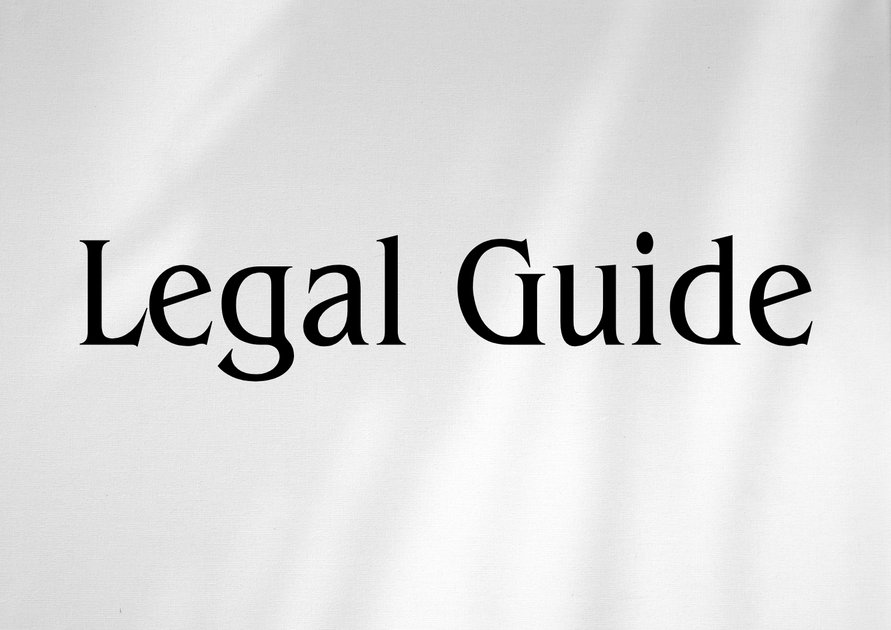Introduction: Navigating Corporate Governance Regulations in Saudi Arabia – A UAE Perspective
As Saudi Arabia accelerates its economic transformation under Vision 2030, robust corporate governance frameworks are at the forefront of its business and regulatory reforms. For UAE-based businesses, investors, and legal practitioners with interests or operations in Saudi Arabia, understanding the evolving landscape of corporate governance is more critical than ever. Recent legal updates and the modernization of oversight standards by the Saudi Capital Market Authority (CMA) have introduced new compliance imperatives, risks, and opportunities. These changes directly impact cross-border transactions, subsidiary operations, and strategic planning for UAE entities operating in or with the Kingdom.
This article delivers a high-level, consultancy-grade legal analysis of Saudi Arabia’s corporate governance regulations. With a focus on practical application, compliance strategies, and comparative insights, UAE businesses and their advisors will gain an authoritative resource to guide compliant, strategic operations in the Saudi market. We anchor our observations in verified UAE legal sources and official Saudi legislation, ensuring accuracy and professional reliability.
Table of Contents
- Overview of Saudi Arabia’s Corporate Governance Landscape
- Key Laws and Regulatory Authorities
- Core Principles and Provisions of Corporate Governance Regulations
- Comparison Table: Updates in Corporate Governance Regulation
- How UAE Businesses Are Impacted
- Risks of Non-Compliance and Enforcement Mechanisms
- Practical Compliance Strategies for UAE Companies
- Case Studies and Hypotheticals
- Best Practices and Forward-Looking Recommendations
- Conclusion: Strategic Insights for the Future
Overview of Saudi Arabia’s Corporate Governance Landscape
The Kingdom of Saudi Arabia has steadily advanced its governance frameworks since the early 2000s, culminating in a comprehensive overhaul under the Saudi Vision 2030 agenda. The Saudi Capital Market Authority (CMA) has issued a series of Corporate Governance Regulations (CGRs), with the most significant update coming via the CMA Board of Commissioners Resolution No. (8-16-2017) on 13 February 2017, which came into effect in April 2017.
These regulations set forth mandatory rules and recommended best practices for joint stock companies listed on the Saudi Stock Exchange (Tadawul), extending to their subsidiaries and, by extension, foreign investors and holding entities. The intention is to foster market confidence, improve disclosure and transparency, and align Saudi regulation with international standards—notably, those set by the OECD and the International Finance Corporation.
Key Laws and Regulatory Authorities
The Legal Backbone
The principal legal instruments underpinning corporate governance in Saudi Arabia are:
- Companies Law (Royal Decree No. M/3 dated 28/1/1437H, as amended in 2022): Outlines the structure, mandate, and accountability for all company types, including joint stock and limited liability companies.
- Corporate Governance Regulations (CMA Board Resolution No. 8-16-2017): Sets specific requirements for board composition, committees, and internal controls for listed companies.
- CMA Resolutions and Circulars: Regularly updated to reflect evolving best practices and regulatory expectations.
Key regulatory authorities include:
- Capital Market Authority (CMA): Primary oversight body for listed companies, responsible for issuance and enforcement of CGRs.
- Ministry of Commerce: Supervises all entities operating in Saudi Arabia through the Companies Law.
Relationship with UAE Legal Regimes
The UAE’s framework, anchored by Federal Law No. 2 of 2015 on Commercial Companies (as amended in 2021 and anticipated 2025 updates), continues to share several parallels with Saudi Arabia’s reforms. But notable differences exist, especially around board independence criteria, minority protection, and disclosure processes—issues that UAE businesses must navigate astutely.
Core Principles and Provisions of Corporate Governance Regulations
1. Board Structure and Independence
- Board Composition: The CGR mandates a minimum of three board members; at least one-third must be independent directors.
- Independent Directors: Defined in more stringent terms than before, with explicit exclusion criteria regarding relationships, shareholdings, employment, and business engagements.
- Chairman and CEO Separation: The Chairman may not serve as the CEO or Managing Director, enhancing segregation of duties.
- Nomination and Remuneration Committee: All listed companies must establish this committee, with a majority of its members as independent directors.
2. Internal Controls and Risk Management
- Internal Control Framework: Companies must implement documented, periodic assessments of internal controls, overseen by an independent audit committee.
- Audit Committee: Mandatory establishment of an audit committee reporting directly to the board, with at least one member possessing financial expertise.
3. Disclosure, Transparency, and Shareholder Rights
- Public Disclosure: Material information and related party transactions must be promptly and accurately disclosed to the public and regulatory authorities.
- Shareholder Engagement: AGM procedures, voting rights, and mechanisms for minor shareholder protection are detailed in the regulation.
- Conflict of Interest: Directors are subject to rigorous disclosure requirements and are prohibited from voting on matters where conflicts exist.
Visual Suggestion: An infographic summarizing the core pillars: Board Structure, Internal Controls, Disclosure & Shareholders.
Comparison Table: Updates in Corporate Governance Regulation
| Aspect | Pre-2017 Regulation | Post-2017 (Current) Regulation |
|---|---|---|
| Independent Directors | Minimum 1 required, definition less precise | At least 1/3 of board; detailed conflicts/criteria |
| Audit Committee | Advisory role | Empowered, mandatory financial expert |
| Disclosure Obligations | Annual and event-driven disclosure | Stricter, continuous reporting, penalties |
| Board Diversity | Not addressed | Recommended, with disclosure if not implemented |
| Related Party Transactions | General oversight | Detailed approval and disclosure process |
How UAE Businesses Are Impacted
UAE entities with direct investments in Saudi Arabian listed companies, joint ventures, or wholly-owned subsidiaries are subject to both the Companies Law and CGR. Importantly, foreign investors must ensure that their board structures, internal controls, and disclosure processes satisfy Saudi requirements—even if their parent company’s UAE framework is robust.
Key Impact Areas:
- Shareholder Agreements: May require amendment to reflect Saudi-mandated board composition and voting rights.
- Cross-Border Disclosure: Information-sharing mechanisms must comply with both UAE and Saudi transparency standards, especially for material events.
- Subsidiary Oversight: UAE holding companies must imbue Saudi-compliant internal controls into their local subsidiaries.
Practical Insight: Multinational UAE groups should conduct gap analyses of board composition, committee structures, and reporting practices to identify Saudi compliance gaps.
Risks of Non-Compliance and Enforcement Mechanisms
Failure to comply with the CMA’s Corporate Governance Regulations can result in significant consequences. The CMA is known for its assertive regulatory approach, employing proactive audits, investigations, and a substantial penalty regime. These can include:
- Fines: Penalties range from SAR 10,000 to SAR 1,000,000 (approx. AED 9,800 to AED 980,000) per violation, depending on the severity and recurrence.
- Board Disqualification: Individual directors can be removed or banned from future appointments.
- Criminal Liability: In some cases, breaches may trigger criminal investigation and prosecution, especially for knowing misrepresentations or market abuse.
- Reputational Damage: Public disclosure of enforcement action is a standard practice, posing long-term brand and investor risks.
Visual Suggestion: Table listing key breaches and penalties for each provision.
| Violation | Regulation | Penalty Range | Potential Consequence |
|---|---|---|---|
| Non-disclosure of material info | Art. 41, CGR | SAR 50,000–250,000 | Fine, public censure |
| Related party transaction violation | Art. 48, CGR | SAR 100,000–500,000 | Board suspension, investigation |
| Insufficient board independence | Art. 20, CGR | SAR 10,000–150,000 | Order to rectify, board reconstitution |
Practical Compliance Strategies for UAE Companies
UAE businesses engaged in Saudi operations should approach compliance not as a one-time exercise but as an ongoing, integrated process. Recommended strategies include:
- Board and Committee Audits: Periodically review and realign board composition, independence, and committee mandates to reflect Saudi rules.
- Integrated Policy Frameworks: Embed Saudi-specific internal control and disclosure requirements into group-wide compliance manuals.
- Immediate Incident Reporting: Establish rapid escalation lines for reporting material events from Saudi subsidiaries to UAE parent entities and onward to relevant authorities.
- Joint Training and Awareness: Conduct regular workshops for directors and senior executives across the UAE and Saudi operations to harmonize governance expectations.
- Legal Documentation Review: Update shareholder agreements, bylaws, and charters to remove ambiguities and preempt conflicts between UAE and Saudi regulations.
Visual Suggestion: Corporate Governance Compliance Checklist (table format) for Saudi/UAE cross-border businesses.
| Compliance Item | Status | Action Required |
|---|---|---|
| Board composition reflective of CGR | ✔️ / ❌ | Amend articles of association if needed |
| Active audit/nomination committees | ✔️ / ❌ | Establish or restructure committees |
| Disclosure procedures harmonized | ✔️ / ❌ | Update internal reporting protocols |
| Cross-border legal reviews | ✔️ / ❌ | Schedule external legal audit |
Case Studies and Hypotheticals
Case Study 1: Board Independence Shortfall
Scenario: A UAE holding company owns a 60% stake in a Saudi joint stock company. Following a recent board shuffle, only 20% of the board remains independent—below the one-third minimum set by CGR. Within six months, the company is audited by the CMA and required to appoint new independent directors or face a SAR 150,000 fine and forced board reconstitution. Both shareholder agreements and appointment procedures required urgent amendment to meet regulatory requirements.
Case Study 2: Failure to Disclose Material Transaction
Scenario: A Saudi subsidiary of a UAE conglomerate enters into a significant related-party transaction but delays notification. The CMA imposes a SAR 200,000 penalty, highlights the breach in public enforcement bulletins, and demands a remedial compliance action plan. The incident negatively impacts the group’s regional reputation and stock valuation.
Key Takeaways:
- Active oversight and frequent audits of board and control procedures are essential.
- Timely, accurate disclosure is paramount—delay or omission equates to high risk.
- Coordination between UAE and Saudi legal/compliance teams is required at all times.
Best Practices and Forward-Looking Recommendations
- Adopt a continuous improvement mindset, updating governance manuals and policies annually to anticipate regulatory shifts—especially as both the UAE and Saudi Arabia frequently update their company laws (e.g., Federal Law amendments anticipated in UAE Law 2025 updates).
- Engage external legal counsel for cross-border compliance reviews, ideally leveraging advisors versed in both jurisdictions.
- Encourage cross-jurisdictional training and director certification, ensuring all board members remain informed of changing obligations.
- Use technology platforms to automate and document compliance, reporting, and board evaluation processes—thereby reducing human error risks and ensuring timely escalation.
- Maintain proactive, transparent relationships with both the CMA and UAE’s Ministry of Human Resources and Emiratisation for guidance and regulator feedback on best practices.
Conclusion: Strategic Insights for the Future
Saudi Arabia’s vigorous approach to corporate governance not only raises the bar for regional capital markets but also sets new benchmarks for cross-border compliance culture. For UAE-based entities, strategic adaptation is imperative—requiring nuanced legal understanding, practical process adjustments, and a willingness to treat governance as a source of resilience and business advantage. Anticipated updates to UAE federal decree laws in 2025 will likely encourage further alignment but will also demand increased diligence from regional businesses.
We recommend clients routinely assess their readiness, mobilize multidisciplinary teams to oversee cross-border compliance, and maintain close counsel with trusted legal advisors. By embracing compliance as a dynamic, ongoing process, UAE businesses will remain ahead of regulatory expectations, bolster investor and stakeholder confidence, and unlock sustainable long-term value in Saudi Arabia’s vital market.
For bespoke advice on structuring your group and operations for compliance in both the UAE and Saudi Arabia—or for assistance with gap analysis, legal documentation, and regulator engagement—contact our Middle East legal consultancy team today.




